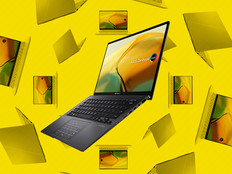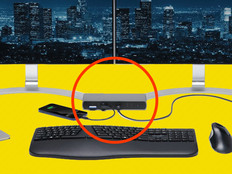Ultrabooks Bridge the Gap between Tablets and Notebooks
As Arlington County, Va., prepares for the post-PC era of computing, ultrabooks fit into that future quite nicely.
"Solid-state devices such as the Apple MacBook Air create a different model for computing," says Arlington County CIO Jack Belcher. "Over time, they will change the character of our PC refreshment cycle."
Although the MacBook Air has been around since 2008, its PC cousin, the ultrabook, only recently began shipping. As with the Air, ultrabooks are designed to be thin (at less than an inch thick) and light (at less than 3 pounds). They also offer long battery life, in the five- to nine-hour range, according to Intel's requirements.
Initial ultrabook models from manufacturers such as Acer, HP, Lenovo and Toshiba incorporate Intel's Sandy Bridge Core i5 and i7 processors. Around the middle of the year, models based on Intel's Ivy Bridge chip should hit the market. Also about that time, expect to see ultrathin notebooks based on a version of AMD's Trinity processor.
Suitable for the Field
Arlington County has several users who could benefit from ultrabooks, including human services field workers, traffic engineers and housing inspectors, according to Kevin Dolan, director of enterprise computing and infrastructure services. "Things like Gorilla Glass displays and faster solid-state storage lend themselves to early adoption by these field workers," he says.
Arlington County building inspectors already use MacBook Air notebooks and iPads to perform onsite video consultations with their supervisors back at the office. "They can get real-time guidance on whether or not something meets code," Belcher says.
Devices such as the Lenovo IdeaPad U300-series ultrabooks lend themselves well to where the county wants to go with its cloud and mobile strategy, as well as where employee preferences are headed, Dolan says. "Ultrabooks are going to be the next big thing for consumers, so we're going to have to accommodate them," he explains.
Dolan believes that ultrabooks nicely fill the gap between the desktop and the tablet. "Tablets perform a very useful function, but in some cases, they don't have all the capabilities of a laptop."
2013 Year by which ultrabooks are expected to replace notebooks
SOURCE: Intel
Indeed, tablets are generally used more for consuming content than for creating it, says Christina Morrison, a public-sector marketing manager for HP, which makes the Folio 13 ultrabook. "Tablets don't have the functionality you need when you're typing on a full-sized keyboard," she explains. "If you're going to create something, you're really going to want something like an ultrabook."
Pricing Particulars
Because the first wave of ultrabooks cost more than a typical notebook, only certain workers may get their hands on one, according to Scott Villinski, manager of Microsoft's optimized desktop architect team for state and local government. "I wouldn't see an agency saying, 'Everyone gets one,' just because at this point there's a premium on them, but with all the original equipment manufacturers making them, those prices will come down," he observes.
As tablets grow in popularity and notebook computers become thinner and lighter, somewhere down the road the two form factors will converge, as they do in Lenovo's Yoga IdeaPad.







